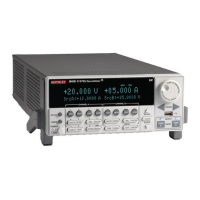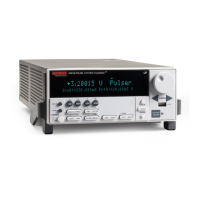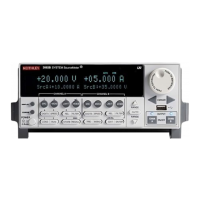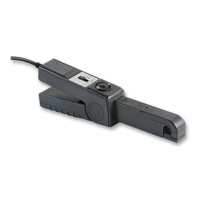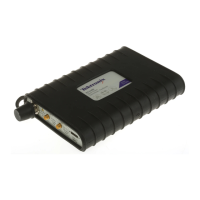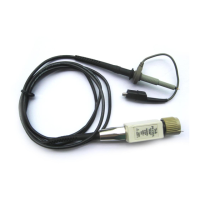14: TSP command reference 2470 High Voltage SourceMeter Instrument
14-100 2470-901-01 Rev. A / May 2019
printbuffer()
This function prints data from tables or reading buffer subtables.
Type TSP-Link accessible
Affected by Where saved Default value
Usage
printbuffer(startIndex, endIndex, bufferVar)
printbuffer(startIndex, endIndex, bufferVar, bufferVar2)
printbuffer(startIndex, endIndex, bufferVar, ..., bufferVarN)
Beginning index of the buffer to print; this must be more than one and less than
endIndex
Ending index of the buffer to print; this must be more than startIndex and less
than the index of the last entry in the tables
Name of first table or reading buffer subtable to print; may be a default buffer
(
or
) or a user-defined buffer
Second table or reading buffer subtable to print; may be a default buffer
(
or
) or a user-defined buffer
The last table or reading buffer subtable to print; may be a default buffer
(
or
) or a user-defined buffer
One or more tables or reading buffer subtables separated with commas
Details
If startIndex is set to less than 1 or if endIndex is more than the size of the index, 9.910000e+37
is returned for each value outside the allowed index and an event is generated.
If overlapped commands use the specified reading buffers and the commands are not complete (at
least to the specified index), this function outputs data as it becomes available.
When there are outstanding overlapped commands to acquire data, n refers to the index that the last
entry in the table has after all the readings have completed.
If you pass a reading buffer instead of a reading buffer subtable, the default subtable for that reading
buffer is used.
This command generates a single response message that contains all data.
The output of printbuffer() is affected by the data format selected by format.data. If you set
format.data to format.REAL32 or format.REAL64, you have fewer options for buffer elements.
With these formats, the only buffer elements available are readings, relativetimestamps,
and
extravalues
. If you request a buffer element that is not permitted for the selected data format, t
he
i
nstrument returns 9.91e37.
You can use the bufferVar attributes that are listed in the following table with the print buffer
command. For example, if testData is the buffer, you can use testData.dates attribute to print
the date of each reading in the testData buffer.

